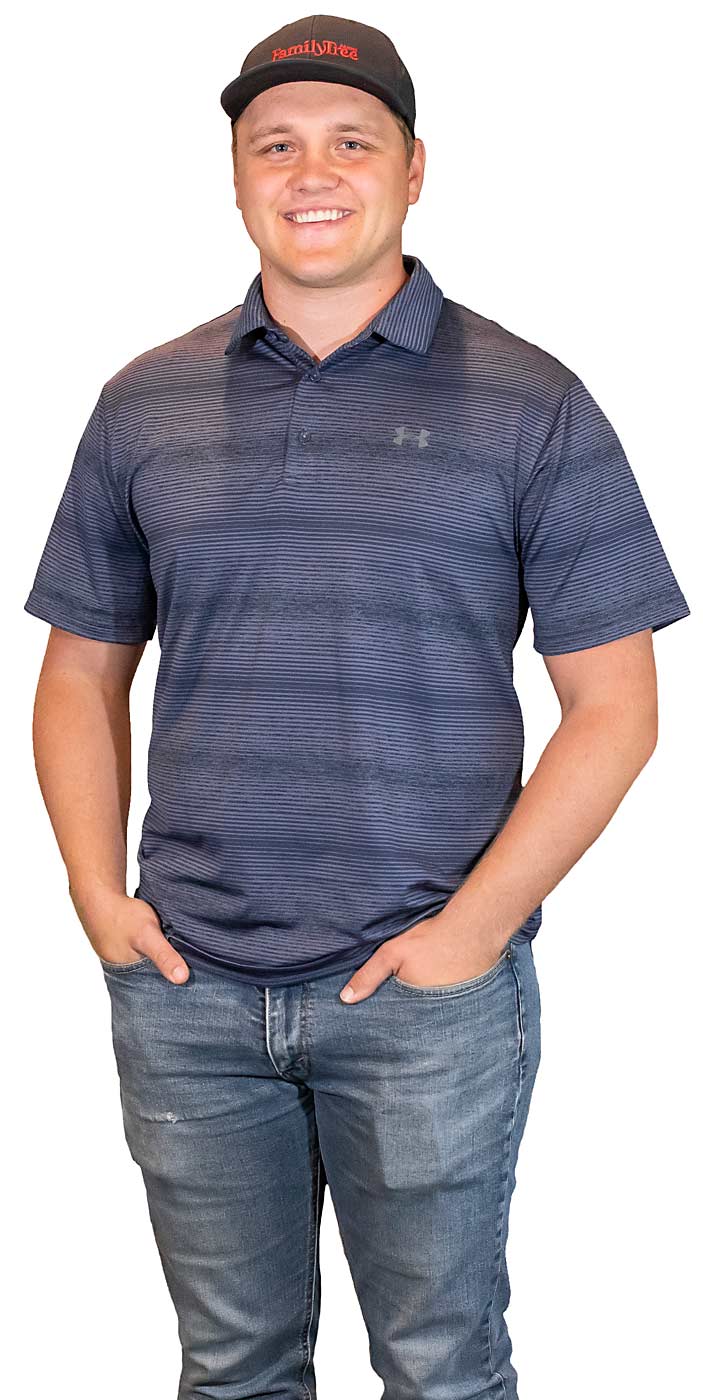family background/ Ty graduated from California State University, Fresno with a degree in ag business and plant science. He’s the son of Becky and Andy Muxlow.
age/23
grower/Kingsburg, California
crops/Peaches and nectarines
business/Family Tree Farms

How did you get your start?
Some of my first experiences were learning how to irrigate a field, understanding what it means to grow a commodity. As a kid, I pruned, I picked, I did pretty much everything under the sun to grow a piece of fruit.
Those lessons really helped me to understand what work and manual labor has to be done in the field to get fruit to market.
I enjoyed being out in the field, out in nature getting my hands sweaty. It grew into a passion of mine and gave me an entrepreneurial spirit.
What other things helped direct your path?
When I was 12 years old, instead of my dad investing in a college fund for me, he invested in a “college farm.” We leased some ground near our home and started a new orchard. It’s something that I enjoyed — getting the opportunity to grow something that young and learn from my mistakes and successes.
When we planted the farm, I remember measuring different spacings to see what might work, whether it was going to be a 9-foot tree spacing or an 8-foot tree spacing.
My dad helped me with those calculations, and it taught me a lot. After the planting, I remember training the trees up with the crews and learning about scaffolds, the main branches and where they should be. We decided on a quad-V planting, which I believe is the most efficient style to pick and prune.
After planting, I became the full-time irrigator. I learned that you could control three basic aspects of a tree: You can control the light, water and amount of fertilizer. I was able to get that hands-on experience, helping me grow into the farmer I am.
What are your current challenges?
Some of them concern labor and water. I’m looking at ways to make the tree smaller, find ways to use platforms and utilize drip irrigation systems.
We are experimenting with platforms. They’ve been widely used in the apple industry and we’re trying to mimic that to make it more efficient to pick our crop.
How do you approach platforms with stone fruit?
Setting up a stone fruit orchard to be successful with platforms, I believe you must ensure the row spacing is just right for the platform to fit. We’ve found there are spacings that work perfectly for the platform.
Also, we can’t put a platform into a furrow-irrigated orchard. We need to use a microsprinkler or drip irrigation system instead, so the ground is flat where the tires will roll. We must keep branches out of the rows.
The tree training needs to be perfect, so I chose a Tatura trellis system to help with tree uniformity and better utilize light as well. It takes more initial cost with a Tatura system and drip irrigation, but it makes sense in the long run financially because of the cost variability of labor and water.
There’s fixed costs and variable costs. Variable costs are much more expensive over time than fixed costs.
What’s your advice to other young growers?
I would say it’s very important to know your books and know your costs of farming. You’ll need to know what things cost and how it applies to your acres. For example, if you’re picking a certain size of fruit and it’s not getting packed, then you’re wasting your pickers’ time.
Knowing your books and understanding the expense side of your farm will help you better manage the business. The most useful course I took covered Excel, how it works and what kind of macros can be used to help forecast future business numbers.
—TJ Mullinax






You guys, two things:
Ty, wow, I am impressed with your story! I know several farmers around here (Kingsburg), and it is really neat to hear your story about working with your dad, and experimenting with how to build your farm, what works best having thoughts about irrigation, growing, picking, packing, etc.
I really like the end of your story when you talked about partnering with God, using what He has provided, and then utilizing our knowledge, wisdom, and experimentation to come alongside what He gives.
Ty, I would like to meet you, and I’d like to meet your dad. I really like your spirit, your confidence, and the two of you working together. I’d like to hear more! Please call me.
The other thing was a comment to TJ Mullinax. Sir, thank you for this article that you put together in Good Fruit Grower! Well done!